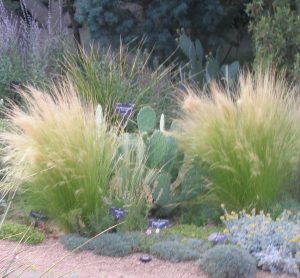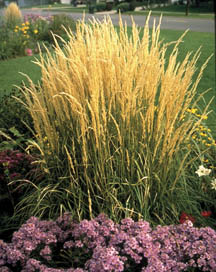When it comes to landscaping in Colorado, decorative grasses often take center stage. Their resilience, versatility, and striking beauty can enhance any garden or outdoor space. As a Colorado resident and avid gardener, I’ve spent years experimenting with various ornamental grasses. In this comprehensive guide, we’ll explore the best decorative grasses for Colorado, sharing tips, personal experiences, and vital information to help you make the right choices for your landscaping needs.
Why Choose Decorative Grasses for Your Colorado Landscape?
Decorative grasses are not just aesthetically pleasing; they offer numerous benefits for Colorado gardens:
- Low Maintenance: Once established, many decorative grasses require minimal care, perfect for busy homeowners.
- Drought Resistance: With Colorado’s arid climate, drought-tolerant grasses help conserve water.
- Seasonal Interest: Grasses provide texture and color throughout the year, enhancing your landscape in all seasons.
- Wildlife Friendly: These plants support local wildlife, offering food and shelter for birds and beneficial insects.
Top Decorative Grasses for Colorado Gardens
Here’s a look at some of the best decorative grasses you can grow in Colorado:
1. Blue Oat Grass (Helictotrichon sempervirens)
Blue Oat Grass is a stunning ornamental grass with unique blue-gray foliage. It thrives in full sun and well-drained soil, making it ideal for the Colorado climate.
Characteristics
- Height: 2-3 feet
- Width: 1-2 feet
- Light Requirements: Full sun
- Soil Type: Well-drained, sandy soil
Pros and Cons
| Pros | Cons |
|---|---|
| Beautiful blue foliage | Can be prone to rust in humid conditions |
| Drought-tolerant | Requires full sun |
| Attractive seed heads | May need occasional dividing |
2. Switchgrass (Panicum virgatum)
Switchgrass is a native perennial grass that adapts well to various soil types, making it a popular choice among gardeners in Colorado.
Characteristics
- Height: 3-6 feet
- Width: 2-3 feet
- Light Requirements: Full sun to partial shade
- Soil Type: Tolerates poor soils
Pros and Cons
| Pros | Cons |
|---|---|
| Supports wildlife | Can grow aggressively |
| Year-round interest | May flop if not spaced properly |
| Excellent for erosion control | Requires more space |

3. Feather Reed Grass (Calamagrostis acutiflora)
Feather Reed Grass adds a vertical element to any garden, with its dramatic feathery plumes that sway gently in the breeze.
Characteristics
- Height: 3-5 feet
- Width: 1-2 feet
- Light Requirements: Full sun to partial shade
- Soil Type: Well-drained, loamy soil
Pros and Cons
| Pros | Cons |
|---|---|
| Strong vertical growth | Needs regular water during dry spells |
| Attractive plumes | Can become floppy if overwatered |
| Increases garden height | Requires regular trimming |
4. Indian Grass (Sorghastrum nutans)
Indian Grass is a stunning addition to any native garden, with its golden-colored plumes that attract attention, especially in late summer and early fall.
Characteristics
- Height: 3-5 feet
- Width: 1-2 feet
- Light Requirements: Full sun
- Soil Type: Prefers well-drained soil
Pros and Cons
| Pros | Cons |
|---|---|
| Great for pollinators | May require staking in high winds |
| Beautiful fall color | Can spread if not controlled |
| Durable and drought-resistant | Not suitable for shaded areas |

How to Incorporate Decorative Grasses in Your Landscape
Now that we’ve explored some great options, let’s discuss how to best incorporate these grasses into your landscape design. Here are some practical tips based on my personal experiences:
1. Use Grasses as Focal Points
Ornamental grasses can serve as excellent focal points in your garden. Consider grouping several together or planting them near pathways to draw the eye.

2. Mix and Match Heights
By combining grasses of different heights, you can create depth and interest in your landscape. Taller grasses can provide a backdrop for shorter ones, making for a dynamic display.
3. Create Natural Borders
Using decorative grasses as natural borders can help define areas of your garden. This technique can add structure to your landscape without the need for more rigid elements like fences or walls.

4. Layer with Perennials and Shrubs
Grasses pair beautifully with a variety of perennials and shrubs. Consider plants that bloom at different times of the year to keep your garden lively throughout the seasons.
Care and Maintenance of Decorative Grasses
While many ornamental grasses are low-maintenance, some care is still required to keep them looking their best:

Watering Tips
Most grasses establish deep root systems, which help them weather Colorado’s dry conditions. However, newly planted grasses will need regular watering until they’re established.
Fertilization
Feeding grasses can promote healthy growth. A slow-release fertilizer in early spring can provide the nutrients they need to thrive.

Pruning and Cleanup
Pruning is essential for maintaining the health of your grasses. In early spring, cut back dead foliage to encourage new growth. Remember, the grasses will often look great even in winter!
Comparing Decorative Grasses for Different Garden Styles
Choosing the right ornamental grass can depend on your garden style. Here’s a quick comparison to help you decide:
| Grass Type | Garden Style | Best Uses |
|---|---|---|
| Blue Oat Grass | Contemporary | Accent plants, borders |
| Switchgrass | Native/Wildlife | Erosion control, cottage gardens |
| Feather Reed Grass | Formal | Focal points, borders |
| Indian Grass | Prairie/Natural | Pollinator gardens, mixed borders |
Frequently Asked Questions
What are the best decorative grasses for Colorado’s climate?
Some of the best grasses for Colorado include Blue Oat Grass, Switchgrass, Feather Reed Grass, and Indian Grass, all of which thrive in the state’s unique conditions.
How much sunlight do decorative grasses require?
Most ornamental grasses prefer full sun, but some varieties can tolerate partial shade. Always check specific care requirements for each grass type.
Are decorative grasses drought-tolerant?
Yes, many ornamental grasses are drought-tolerant once established, making them ideal for Colorado’s arid climate.
When is the best time to plant decorative grasses?
The ideal time to plant decorative grasses in Colorado is in the spring after the last frost or in the fall for cool-season varieties.
How do I care for ornamental grasses in winter?
Most grasses should be left standing through winter for visual interest. In early spring, trim back dead foliage to promote new growth.
Conclusion
Decorative grasses can transform your Colorado landscape into a beautiful, low-maintenance oasis. With a variety of colors, textures, and heights, these plants offer endless possibilities for garden design. Drawing from my personal experiences and research, I hope this guide empowers you to select the best decorative grasses for your home. Happy gardening!